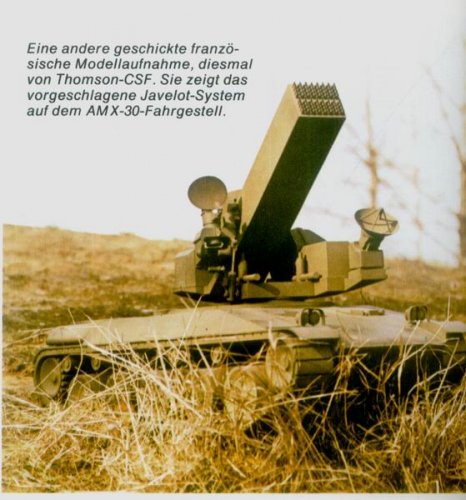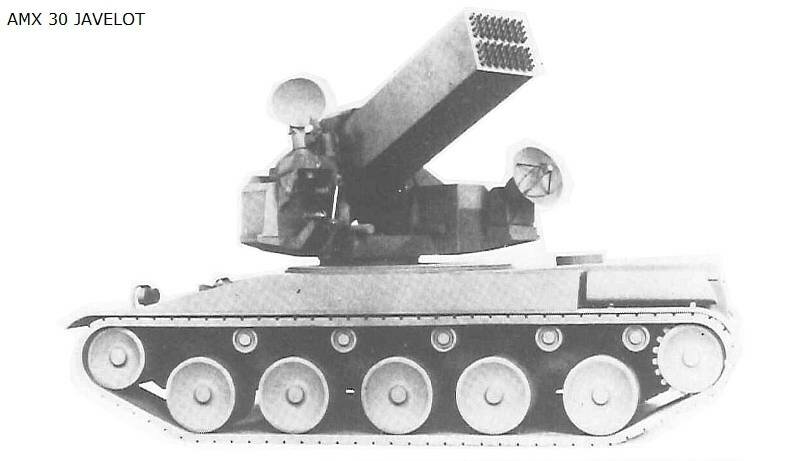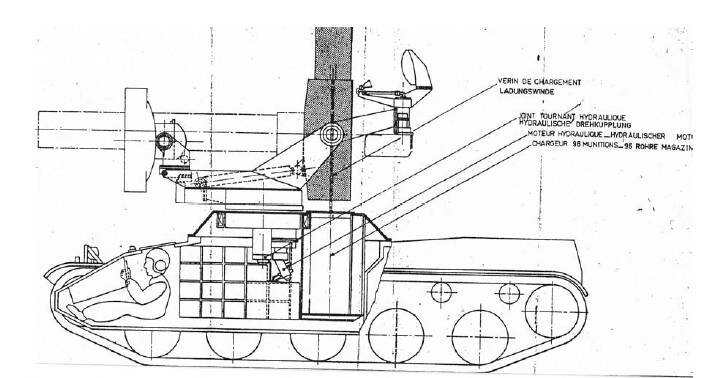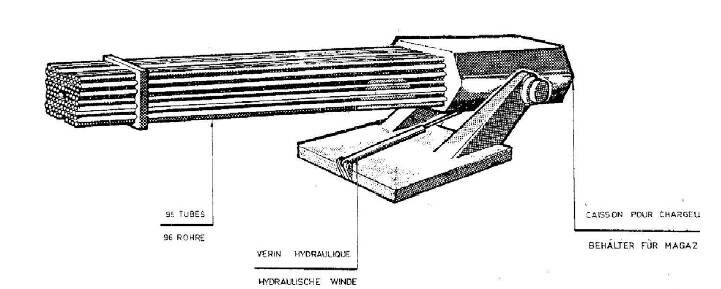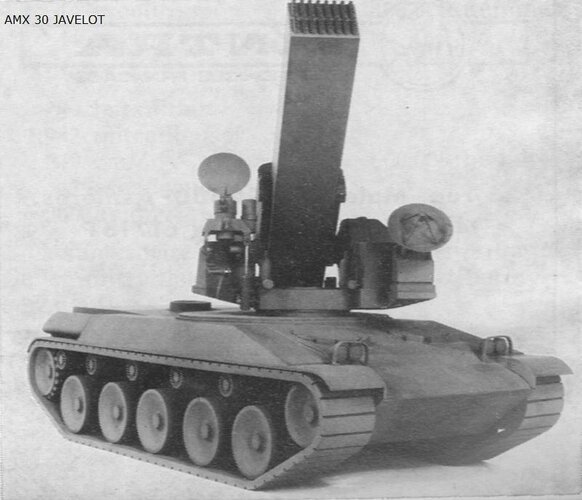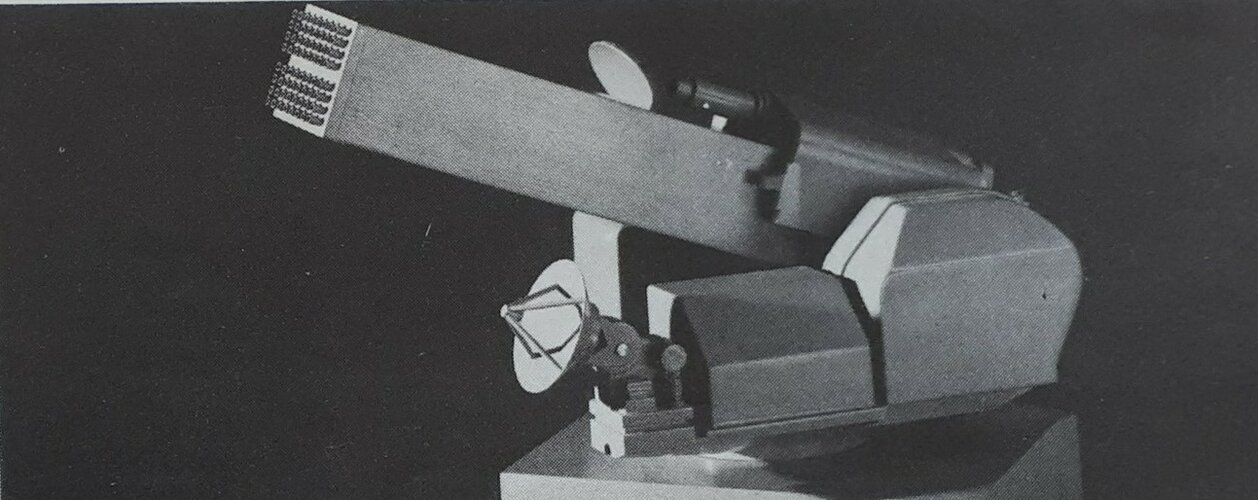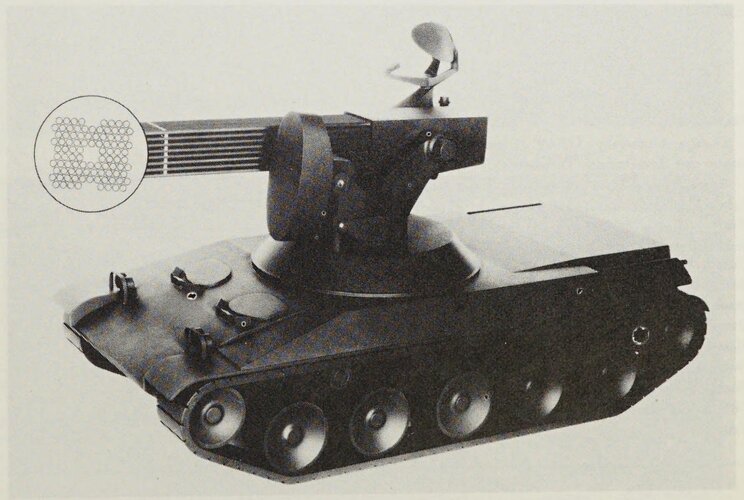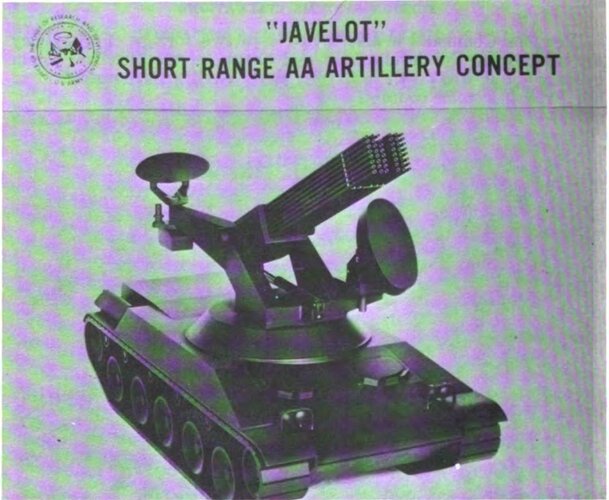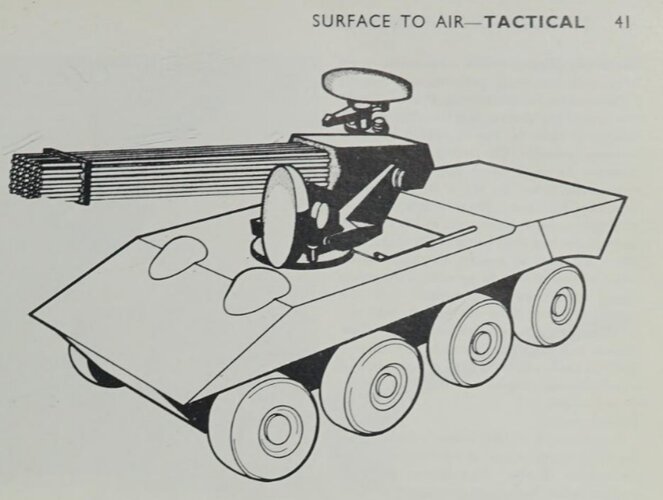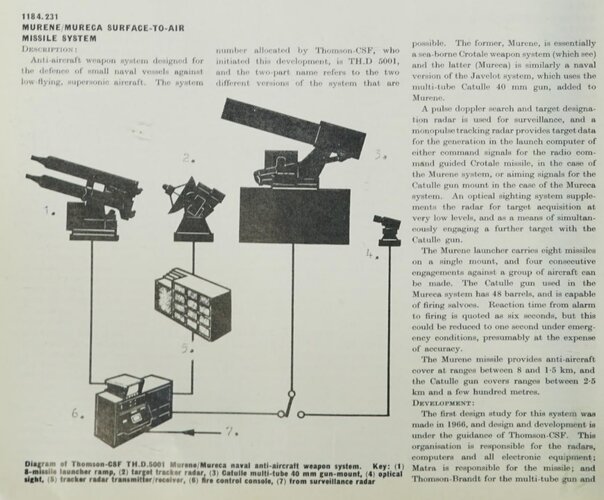I found no information in English. I hope you learn well your French lessons:
Le système lance-roquette Javelot
Le système d’armement anti-aérien Javelot consistait en un lance roquette
multitube, doté d’une grande puissance de feu (64 tubes) lançant par effet canon des
roquettes de 40 mm d’un poids légèrement supérieur à un kilogramme (1.030
grammes) à une vitesse initiale de V0 = 1100 m/s. Ces roquettes pourvues d’une
propulsion additionnelle sur trajectoire et stabilisées par empennage atteignaient 1100
m/s, soit à 2.000 mètres une durée de trajet de 2,8 s. La charge de 400g de la tête
militaire pouvait être déclenchée par une fusée â impact ou une fusée de proximité.
Le tir s’effectuait par salve de 8 roquettes, « organisées » dans l’espace (directions de
tir différentes) et répétées dans le temps (départ successif de salves). L’originalité de
ce principe et la qualité de la conduite de tir sont à mettre au crédit de Thomson-CSF.
Il est reconnu que, pour un même nombre de coups tirés, le tir de salves, s’il est plus
contraignant pour l’affût que le tir en rafale, est plus efficace. L’organisation de la
salve consistait à choisir les tubes lanceurs dans l’ensemble multitube, en fonction de
la présentation de la cible avion (avion vient, avion défilant, etc ...) Les études
Thomson-CSF ont été conduites par MM. BILLOTET et GUILBAUD. Le lance roquette
et les munitions furent étudiées par THOMSON-BRANDT sous la direction de
M.CREPIN..
Le programme, qui était relativement important (environ 100 MF) a été
financé par les États Unis (service de Chicago) au titre des échanges «two way street»
entre la France et les USA , en ce qui concerne le développement exploratoire et la
maquette probatoire lance roquettes multiples. Le programme suivi en France par la
DTAT (ICA de BERNARDI), se déroula de 1970 à 1973 mais ne fut pas poursuivi.

